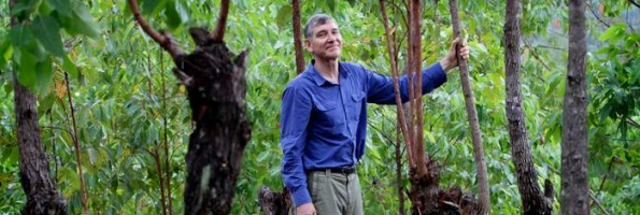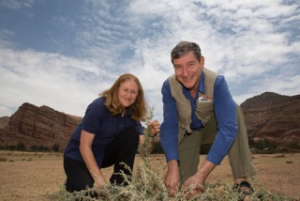 My wife, Liz and I worked in Niger from 1981 to 1999. As young and inexperienced agriculturalists, the conditions that confronted us were overwhelming: massive deforestation, desertification, changing climate contributing to crop failure, poverty and increasingly, severe famine. Many despaired of ever providing for their families and conflict over dwindling resources increased, particularly between farmers and herders. We tried best practices – central nurseries, village nurseries, individual nurseries; planting before the rains, exotic and indigenous species, watering, guarding, fencing, offering incentives, even threats… Nothing worked.
My wife, Liz and I worked in Niger from 1981 to 1999. As young and inexperienced agriculturalists, the conditions that confronted us were overwhelming: massive deforestation, desertification, changing climate contributing to crop failure, poverty and increasingly, severe famine. Many despaired of ever providing for their families and conflict over dwindling resources increased, particularly between farmers and herders. We tried best practices – central nurseries, village nurseries, individual nurseries; planting before the rains, exotic and indigenous species, watering, guarding, fencing, offering incentives, even threats… Nothing worked.
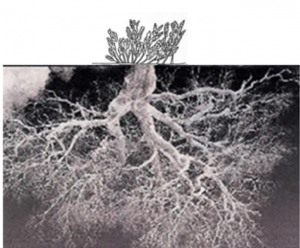 Delivering seedlings, I looked around at the barren landscape. I realized that even if I had millions of dollars and hundreds of staff, we could not make an impact. I was wasting my time. It was too hard. I wanted to give up.
Delivering seedlings, I looked around at the barren landscape. I realized that even if I had millions of dollars and hundreds of staff, we could not make an impact. I was wasting my time. It was too hard. I wanted to give up.
For me, the solution came as an answer to prayer: 'Forgive us for destroying your beautiful creation. People are suffering. But you still love us. Show us what to do. Open our eyes.'
Then I saw what I now call 'the underground forest'. I’d travelled these tracks weekly for three years, eyes open but blind to the potential. What I’d dismissed as insignificant desert shrubs were in fact re-sprouting tree stumps – and there were millions of them.
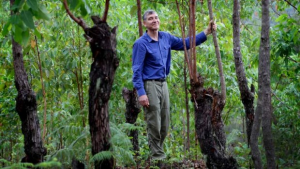 Globally millions of hectares of land have the potential to be re-vegetated through the management of stems growing from living tree stumps, roots and seedlings in the ground. This simply requires a change in behaviour – to select, thin and prune the stems for optimal growth, and to manage livestock, fire, ploughing and harvesting of the stems so that they have the opportunity to grow to the desired size.
Globally millions of hectares of land have the potential to be re-vegetated through the management of stems growing from living tree stumps, roots and seedlings in the ground. This simply requires a change in behaviour – to select, thin and prune the stems for optimal growth, and to manage livestock, fire, ploughing and harvesting of the stems so that they have the opportunity to grow to the desired size.
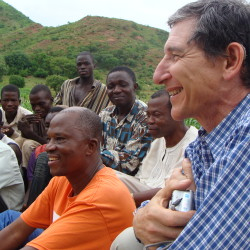 Everything changed! It was no longer a technical issue of best practice tree planting, which species to use or how big my budget was. It was really a social issue of why trees had disappeared in the first place and how to bring people on side. We were not fighting the desert, we were fighting for hearts and minds – fighting false beliefs and attitudes about land clearing, trees competition with crops, and well intentioned government policies which, perversely, were accelerating deforestation.
Everything changed! It was no longer a technical issue of best practice tree planting, which species to use or how big my budget was. It was really a social issue of why trees had disappeared in the first place and how to bring people on side. We were not fighting the desert, we were fighting for hearts and minds – fighting false beliefs and attitudes about land clearing, trees competition with crops, and well intentioned government policies which, perversely, were accelerating deforestation.
Over the next 20 years, this simple, no-cost method, called Farmer Managed Natural Regeneration was spread by farmers and five million hectares of previously barren farmland were revegetated with 200 million trees. In one study, conflict had reduced by 80 percent through implementing a number of measures, including this land restoration method.
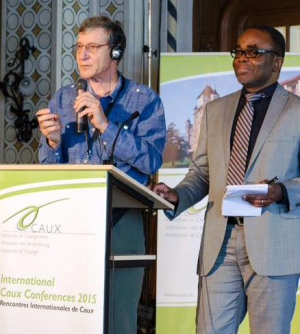 Having lived and struggled in a country where the impacts on people of massive land degradation were daily 'in your face' it was very refreshing to attend the Caux Dialogue on Land and Security. An authority on soil stewardship, Professor Rattan Lal emphasised that soil security is the basis for food security; our collective way of life is eating away at the building blocks that support life on earth. By 2020, it is forecast that 16 million people will migrate from dry areas due to land degradation. We mixed with people from all walks of life who could see the clear links between land degradation and security, learned from them and shared our Niger experiences. Many had never dreamed that such a simple process could have such a large scale impact.
Having lived and struggled in a country where the impacts on people of massive land degradation were daily 'in your face' it was very refreshing to attend the Caux Dialogue on Land and Security. An authority on soil stewardship, Professor Rattan Lal emphasised that soil security is the basis for food security; our collective way of life is eating away at the building blocks that support life on earth. By 2020, it is forecast that 16 million people will migrate from dry areas due to land degradation. We mixed with people from all walks of life who could see the clear links between land degradation and security, learned from them and shared our Niger experiences. Many had never dreamed that such a simple process could have such a large scale impact.
Tony Rinaudo
https://en.wikipedia.org/wiki/Farmer_Managed_Natural_Regeneraton
http://fmnrhub.com.au/
https://vimeo.com/169042685
http://blog.worldvision.com.au/farmer-managed-natural-regeneration-chang...
Farmer Managed Natural Regeneration – a good news story from WorldVisionVloggers on Vimeo.



